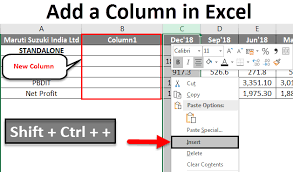Are you struggling to organize your data in Excel? Adding a column to your spreadsheet can make a world of difference.
In this article, we’ll show you the step-by-step process of adding a column and share some time-saving shortcuts to make your life easier.
We’ll also provide tips on how to effectively organize your data using added columns and explore advanced techniques for adding calculations.
Get ready to become an Excel master!
The Importance of Adding a Column
Adding a column to your spreadsheet is an essential step in organizing and analyzing your data. Whether you’re working with financial data, sales figures, or any other type of information, adding a column allows you to categorize and sort your data effectively.
By adding a column, you can input formulas or functions that calculate totals, averages, or any other desired calculations. This not only saves you time but also ensures accuracy in your calculations.
Additionally, adding a column provides you with the flexibility to insert new data or make adjustments without disrupting the existing structure. It allows you to easily expand your spreadsheet and accommodate any changes or updates in your data.
Step-by-Step Guide to Adding a Column
First, you’ll need to select the column next to where you want to add the new column. To do this, simply click on the letter at the top of the column.
Once you have selected the column, right-click on it and choose the ‘Insert’ option from the drop-down menu. A new column will then be added to your spreadsheet, shifting all the columns to the right.
If you want to add multiple columns, you can select multiple adjacent columns before right-clicking and choosing ‘Insert.’ Alternatively, you can also use the keyboard shortcut by pressing ‘Ctrl’ and ‘+’ keys together.
Adding a column to your spreadsheet is a simple and essential task that allows you to organize and analyze your data more effectively.
Time-Saving Shortcuts for Adding a Column
To save time and streamline your workflow, you can utilize convenient shortcuts and conjunctions to add a column to your spreadsheet.
Instead of manually inserting a column, you can simply press the shortcut key combination of ‘Ctrl’ and ‘+’ to add a new column to the right of your current selection. This shortcut eliminates the need to navigate through menus and saves you valuable time.
Another time-saving shortcut is using the ‘Insert’ button on your keyboard to add a column. Just select the column where you want to insert a new one, and press the ‘Insert’ button. Excel will automatically shift the existing columns to the right and insert a new column in the desired location.
These shortcuts are simple yet effective in enhancing your productivity when working with Excel spreadsheets.
Tips for Organizing Data With Added Columns
To ensure better organization and clarity in your spreadsheet, you can use various techniques to effectively manage the data in the added columns.
One helpful tip is to use headers for your columns. This allows you to clearly label and identify each column, making it easier to understand the data they contain.
Additionally, you can use color coding to group related columns together. For example, you can assign a specific color to all columns that contain financial data, making it easy to visually distinguish them from other columns.
Another useful technique is to freeze the first row or column. This allows you to keep important headers or labels visible even when scrolling through the spreadsheet.
Advanced Techniques for Adding Calculations in a New Column
When adding a new column to your spreadsheet, you can enhance its functionality by utilizing advanced techniques such as formulas and functions. These techniques allow you to perform complex calculations and manipulate data in the new column.
Formulas are mathematical expressions that can be used to perform calculations based on the values in other cells. For example, you can use a formula to add up the values in a range of cells and display the result in the new column.
Functions, on the other hand, are pre-built formulas that can perform specific calculations. Excel provides a wide range of functions that can be used to perform tasks such as finding the average, counting the number of cells with a specific value, or calculating the maximum or minimum value in a range.
Conclusion
So there you have it! Adding a column to your spreadsheet is a simple yet essential task that can greatly enhance your data organization and analysis.
With the step-by-step guide, time-saving shortcuts, and advanced techniques provided in this article, you’re well on your way to mastering Excel and becoming a more efficient and effective spreadsheet user.
Happy spreadsheeting!
